Welcome to a deep dive into the tactical intricacies of Real Sociedad under the guidance of their skilled manager, Imanol Alguacil. In this comprehensive analysis, we unravel the strategic nuances and formations that define Real Sociedad’s style of play. From their build-up phases to defensive structures, we’ll explore how Alguacil’s tactics shape the team’s performance on the pitch. Get ready to uncover the secrets behind Real Sociedad’s footballing philosophy and the impact of Imanol Alguacil’s managerial prowess on the club’s success.
Build-up
Alguacil sets his team up in a 1-4-3-3 formation in the build-up:
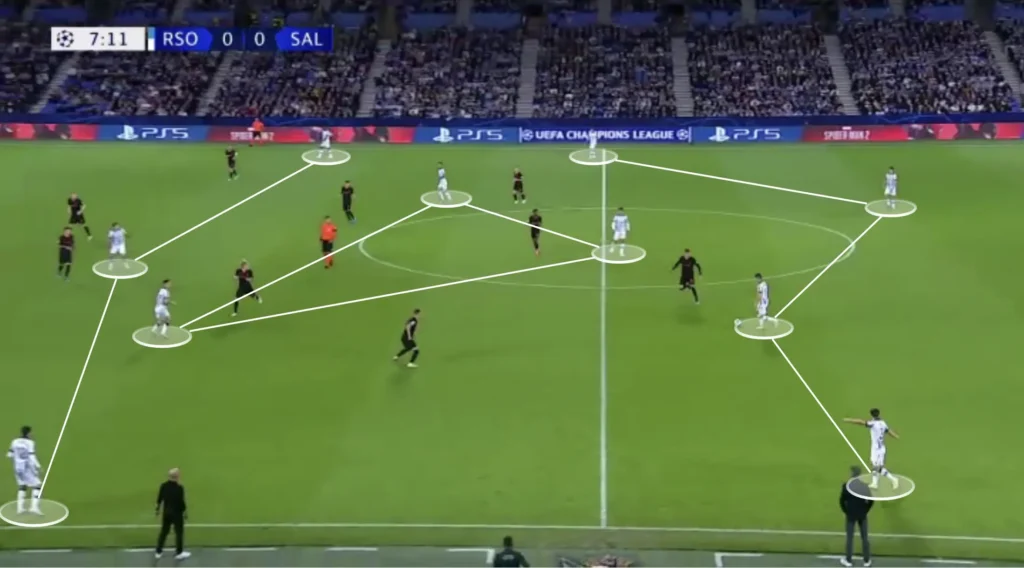

The midfield three is very fluid and often rotates and changes positions.
Inverted Fullbacks
The Real Sociedad fullbacks usually invert during the build-up, creating more options in the center and less space between the players. Alguacil likes this because he prioritizes playing through the middle. He needs one player high and wide to pull apart the backline while the rest create numerical advantages in the midfield areas. This builds good conditions in defensive transitions, allowing more players to press when they lose the ball. Another purpose for keeping most of the players central is that it lessens tween them the distance. This shortens the length of the passes, which naturally shortens the time between passes. This means the opposition players will have less time to push up and press, giving the Real Sociedad players more time and control.

Finding the Pockets
Real Sociedad always try to find the number-eights or the wingers in the pockets. Sociedad’s midfield numerical superiority and constant movement usually mean that at least one player will be open in the space between the midfield and backline. They will look for passes from the back, breaking lines and finding these players, who will turn and drive at the defense.
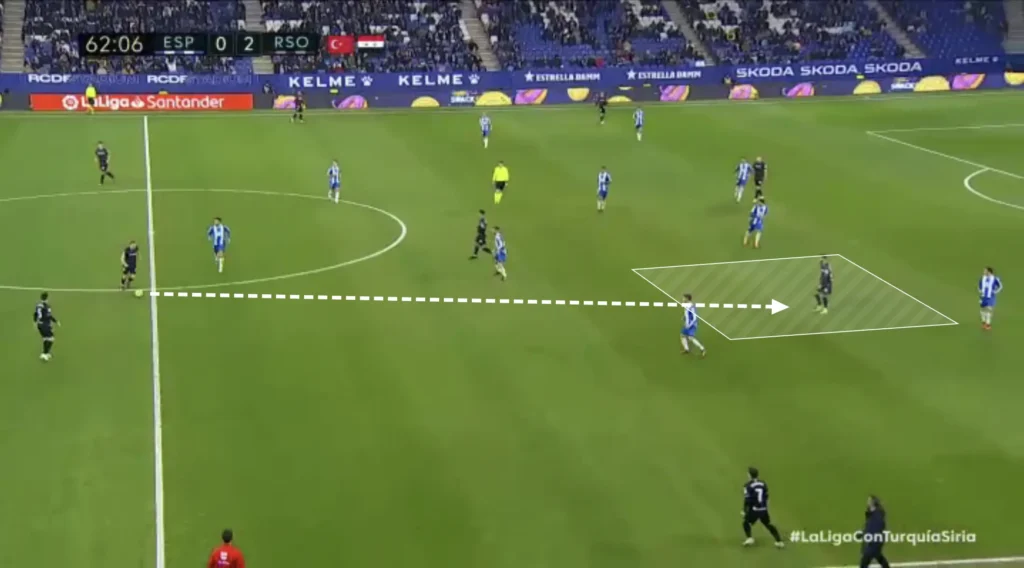
Third-man
Imanol Alguacil likes it when his team keeps possession and plays through the opposition. One vital tool that they often use is the third-man principle. This means using a third player to reach a free player whose passing lane is blocked.

Counter-Movements
Real Sociedad often use counter-movements with the winger and midfielder to create space in the build-up. When the fullback gets the ball, the winger runs towards the fullback, dragging the opposition fullback with him. This opens the space behind the fullback, which allows the ball to be played into the open space for a running midfielder.

This run from the midfielder also leaves the space he came from open, which can be used by the fullback. The fullback will run into the space after passing the ball to the winger, who gives it back for a one-two. From there, the fullback can attack the defense and create chances for his team.

Final Third
Attacking the Half-Space
Real Sociedad is an excellent team in the final third. They always create many chances, mainly by attacking the space between the opposition center-back and fullback.
They usually do this from the wide areas with underlaps from midfielders, creating a 2v1 with the winger against the opposition fullback:
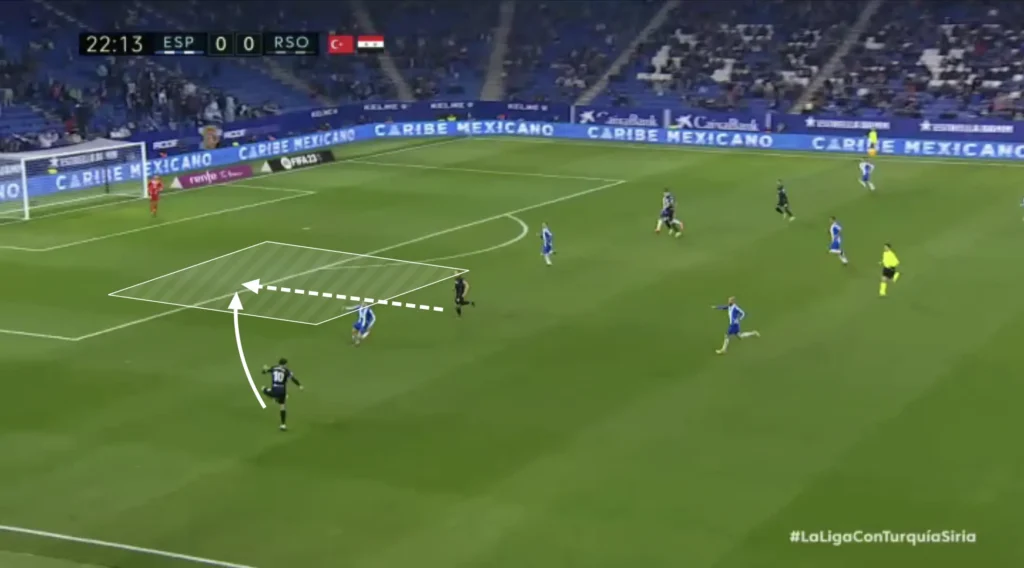

This 2v1 creates questions for the opposition fullback. If he drops to cover the underlapping run, the winger could cut inside and take a shot or combine with a midfielder. If the fullback covers the center, the ball can easily be played to the underlapping player, creating a crossing opportunity.

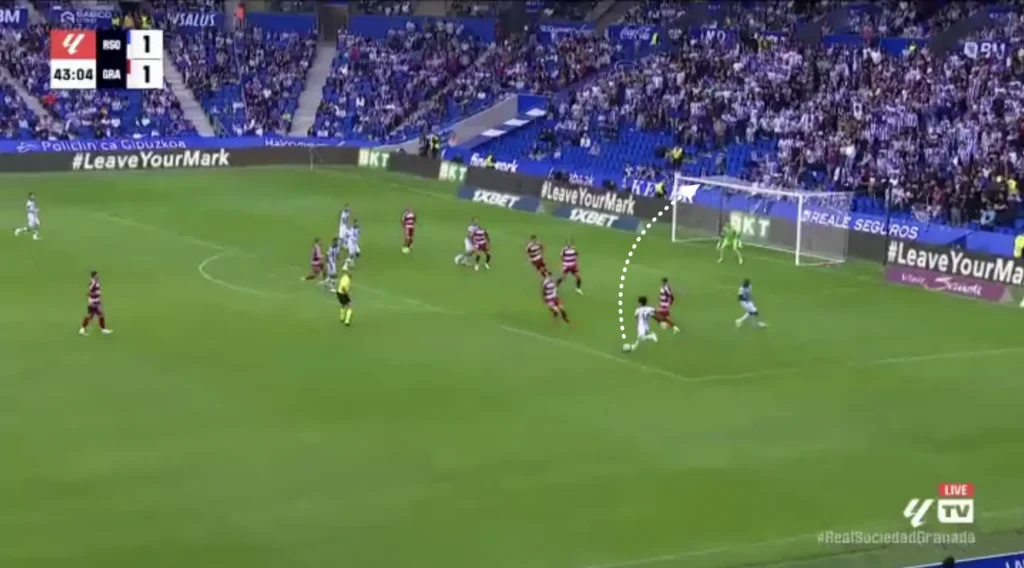
They also attack the half-spaces with midfield runs and passes from the center:

Many Players in the Box
The attacking midfielders also look to make runs into the box when the ball is in the final third, often getting four or five players into these areas to create overloads. The numerical advantages in the box force the defending team to make decisions and leave some players open. The open player can receive a cross or a pass and get a great goalscoring opportunity. Alguacil also positions many players outside the box, ready for the second-balls and cut-backs.

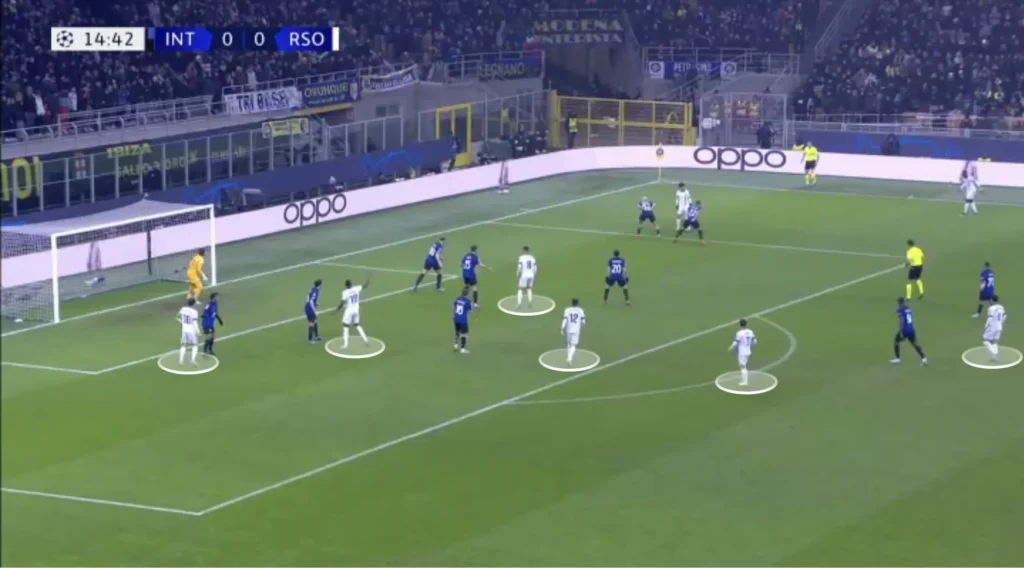
The opposition backline is often preoccupied with the Real Sociedad forward line, meaning that the runs into the box from the midfielders become uncontested. Crosses to midfielders running into the box can be very effective and is something Alguacil’s team uses often.
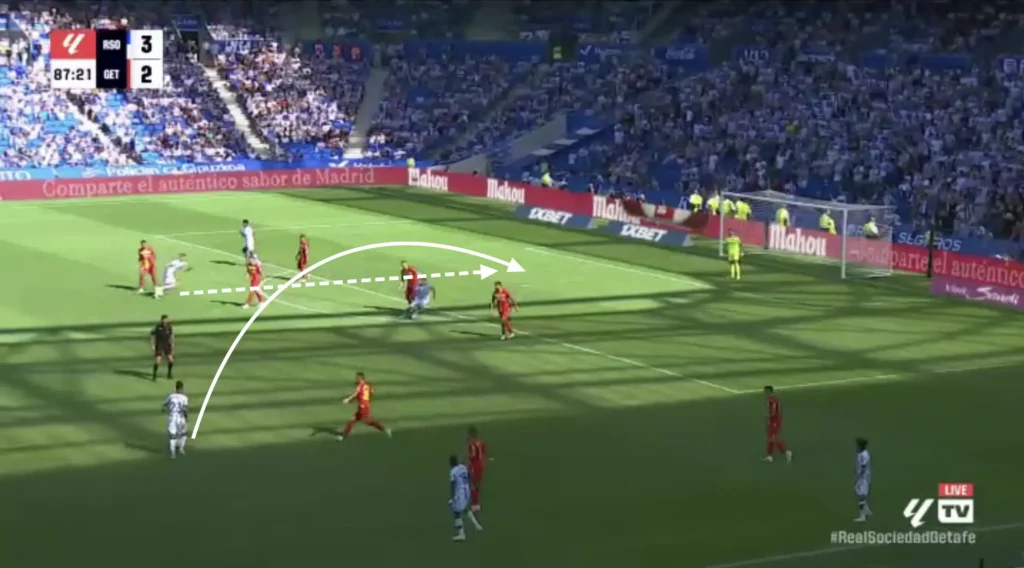
Defending
High Press
Imanol Alguacil’s Real Sociedad presses the opposition high when possible and do so in a 1-4-1-3-2 formation:

Many teams use a 1-4-3-3 formation in the build-up, which would give them a numerical advantage against Real Sociedad’s six midfielders and forwards. Alguacil solves this by leaving the opposition’s weak-side fullback open and going man-to-man on the rest of the players when the ball gets played to one of the sides. The ball-side wide-midfielder pressures the opposition ball-side fullback, the holding midfielder pushes over on the opposition ball-side number-eight, and the weak-side wide-midfielder tucks in to control the opposition weak-side number-eight.
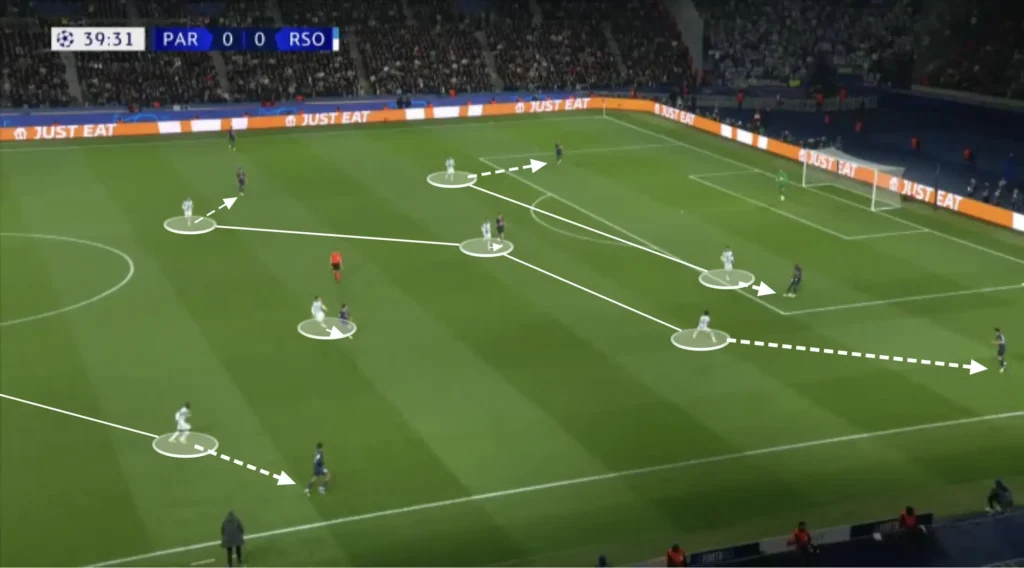

They can do this because the pass from one side to the other is too difficult for the ball-holder to make, and if he makes it, the Real Sociedad players have enough time to come across and win the ball. This system also gives Real Sociedad a numerical advantage against the opposition striker, giving them more control when defending the long balls.
Low Press
In the low press, Real Sociedad set up in a 1-4-1-4-1 formation. They often set up in a mid-block, always trying to push up and press the opposition.


Real Sociedad goes man-to-man in the midfield when playing against a midfield three, which means that the shape sometimes changes.
Defensive Transitions
Positioning many players centrally, creating a numerical advantage in the midfield, creates good conditions in defensive transitions. Many players close to the ball after losing possession means that many players can work towards regaining possession. Alguacil’s team, therefore, often regains possession directly after losing it.
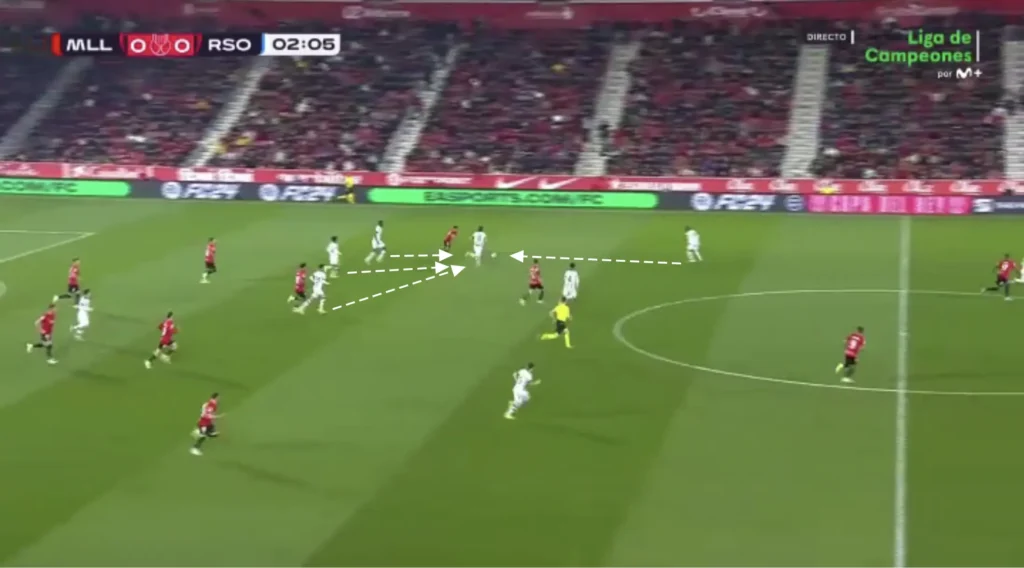
Final Thoughts
In conclusion, this tactical analysis of Real Sociedad under the guidance of Imanol Alguacil unveils the intricacies of their playing style and strategic approach. Alguacil’s impact on the team is evident in their dynamic formations, versatile build-up strategies, and defensive solidity. Real Sociedad’s commitment to possession-based football, fluid positional play, and effective pressing reflect Alguacil’s tactical understanding. The emphasis on player rotations, especially in midfield and attack, contributes to the team’s unpredictability. As they navigate the complexities of La Liga and beyond, Alguacil’s tactical fingerprints continue to shape Real Sociedad into a formidable force on the pitch.
